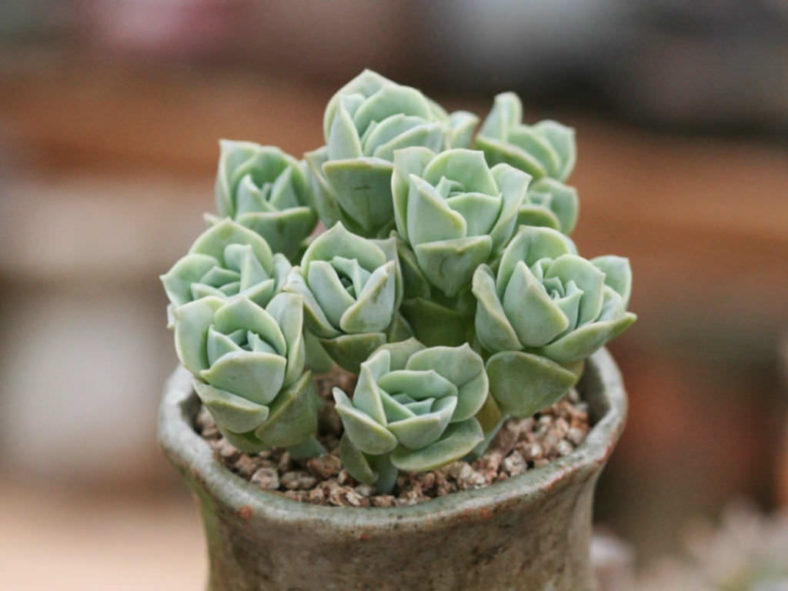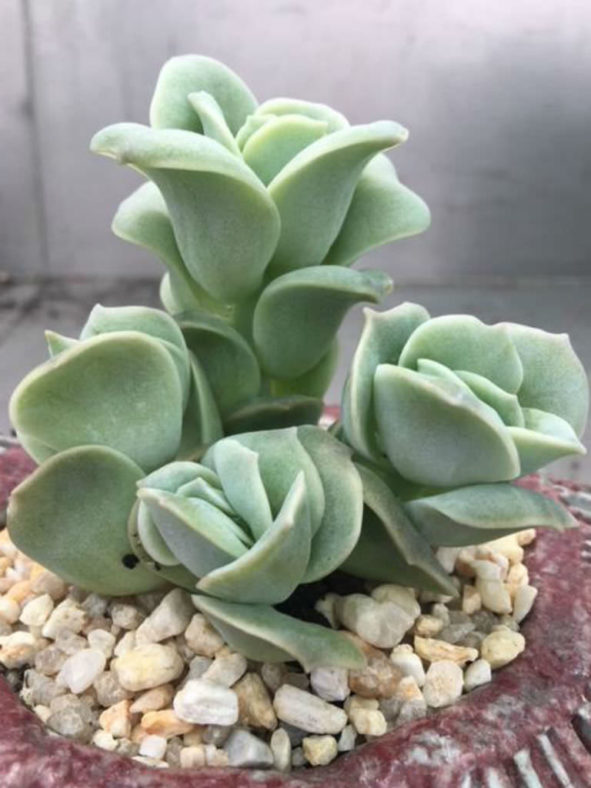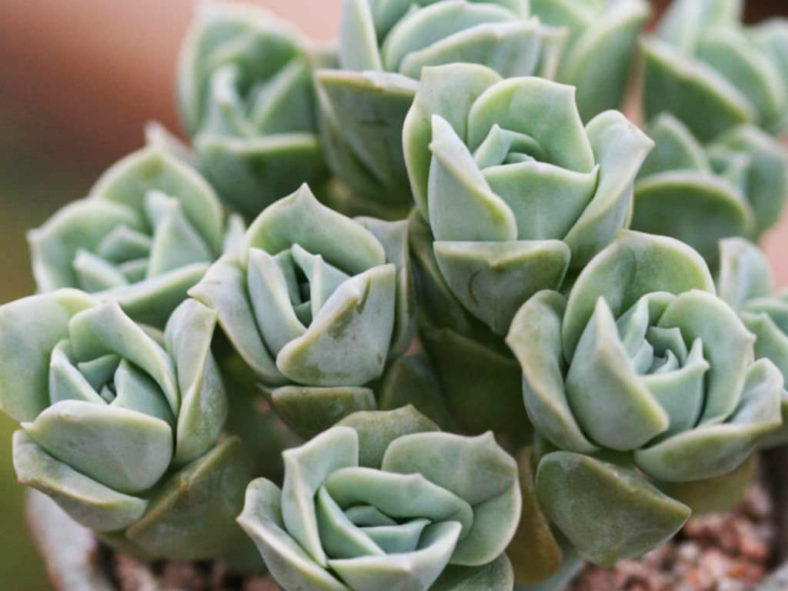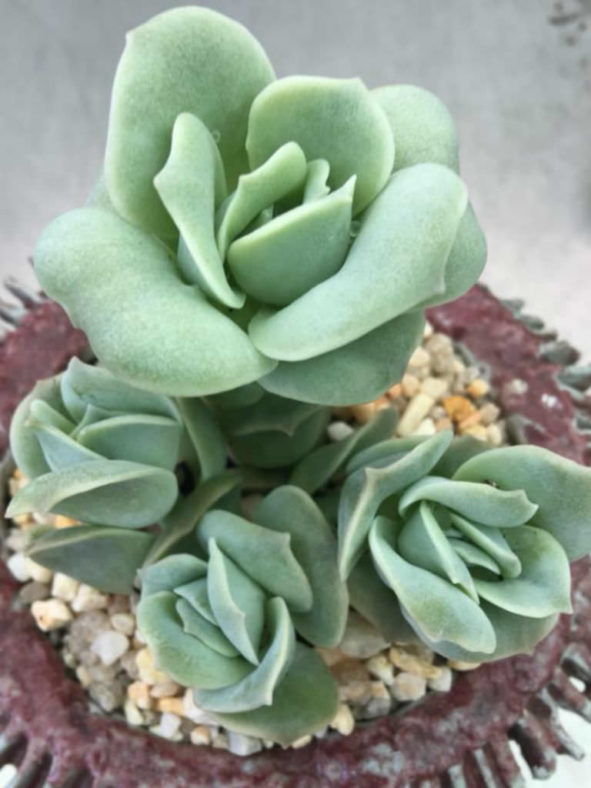Scientific Name
×Graptoveria 'Lovely Rose'
Synonym(s)
Echeveria 'Lovely Rose'
Scientific Classification
Family: Crassulaceae
Subfamily: Sempervivoideae
Tribe: Sedeae
Nothogenus: ×Graptoveria
Origin
×Graptoveria 'Lovely Rose' is a hybrid that originated in the nursery of N. Kleinmichel & S. Grätz in Wörth, Germany. The parentage is unknown. It is said to be a mutation of ×Graptoveria 'Titubans'.
Description
×Graptoveria 'Lovely Rose', also sold as Echeveria 'Lovely Rose', is an attractive small succulent with plump, fleshy, tightly compacted, gray-green leaves that form a beautiful rose-like cluster on the top of a bare stem. It produces offsets and develops a dense clump in time.
The flowers are pale yellow with a greenish midstripe on each petal and appear in clusters on short stalks in spring.

How to Grow and Care for ×Graptoveria 'Lovely Rose'
Hardiness: USDA hardiness zones 9a to 11b: from 20°F (-6.7°C) to 50°F (10°C).
The rules for Graptopetalum care are similar to those for most succulents. Container-bound plants thrive in a mixture of peat, sand or other grit, topsoil, and a little compost. Full sun is the best situation, but they will grow in partial sun with slightly rangy results.
Graptopetalums need excellent drainage and moderate water. You can tell when to water by sticking your finger in the soil. You should water if it is dry several inches down or the fleshy leaves look shriveled. Overwatering is a cause of root rots, and the plant can get several pest infestations.
These succulents are generally easy to propagate from seeds, leaf cuttings, or offsets. Any rosette that breaks off can root and start a new plant. Even a leaf that drops off will root below the parent plant and quickly produce a new rosette. The new plant feeds off the leaf until it shrivels and falls off. The new little ghost plant had rooted and sprouted new leaves by then.
Learn more at How to Grow and Care for Graptopetalum.
Links
- Back to nothogenus ×Graptoveria
- Succupedia: Browse succulents by Scientific Name, Common Name, Genus, Family, USDA Hardiness Zone, Origin, or cacti by Genus
Photo Gallery
Click on a photo to see a larger version.


